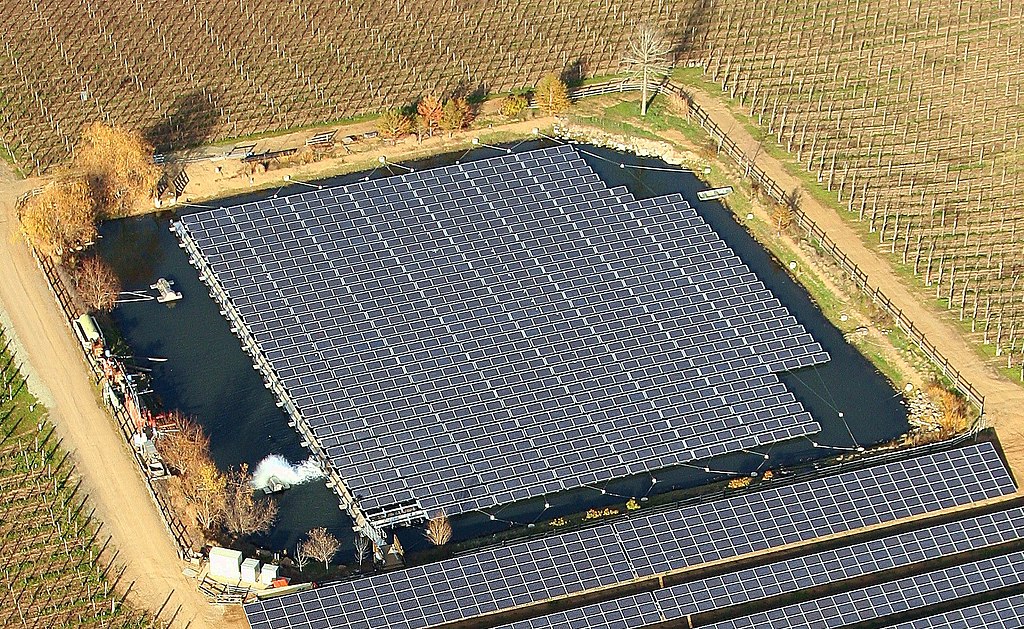
Floatovoltaics: A Solution to Keep Us Afloat in our Fight Against Climate Change?
January 27, 2023By Raghav Pardasani, 2022 Future Blue Youth Council member
Featured Image: “Light of Hope on New Horizon” by Nathaniel Chyu (California, USA)
In my first year of college, I participated in a case competition where I learnt extensively about offshore wind energy, which involves wind turbines located in bodies of water. I grew intrigued by how our oceans and seas not only serve important biological, economic and social functions, but can also aid us in the journey of decarbonization. More recently, I went to Houston for an energy and climate career trek sponsored by my university where I was able to interact with a company at the forefront of producing floating solar arrays across the world. These experiences left me with some questions: Why do we need solar panels on water bodies in the first place? Will energy systems interfere with water quality, aquatic life, and people’s livelihood?
Over the years, electricity prices for solar energy have fallen below those for fossil fuel energy. While this has accelerated the expansion of solar energy, large solar farms take up a substantial portion of land. This is not a trivial problem: to meet the Biden administration’s goals to eliminate or offset emissions by 2050, the American solar industry would need land equivalent to twice the size of Massachusetts. Residents, especially in rural areas, have protested against solar projects on lands that are preserved or used for food production, wildlife conservation, or other productive uses. You may be wondering, what about lands that are barren and yet receive a lot of sunlight, such as deserts? Even in these cases, there are prominent issues. A study that uses modeling to evaluate the impact of Sahara solar farms finds that the photovoltaic panels can cause unintended droughts in the Amazon, accompanied with a rise in global surface temperature and sea-ice loss. Moreover, the transmission costs of getting the energy from deserts to areas that require energy would be massive.
From this, the solution of floating solar panels (floatovoltaics) has emerged.

Floatovoltaics involve conventional solar panels installed on floats that are anchored through mooring lines. This solution offers a number of advantages: the cooling effect of water increases the efficiency of the panels by 5-15 percent, which translates into a greater amount of power fed into the grid compared to land-based projects. Especially in water-scarce or drought-prone areas, the array can shield the water body from the sun and decrease evaporation and prevent the proliferation of harmful algae. Instead of the open sea, floating solar arrays are usually placed in hydropower reservoirs, which are already connected to the grid, so there is no need for additional grid infrastructure. Additionally, hydroelectricity and solar power generation cancel each other’s disadvantages: the solar array will not be affected by drought conditions, while the dam will keep working on rainy days.
Then, why is the global installed capacity of floating solar so low?
There are many reasons for that. Wet environments can cause issues with cabling and other components of the panel. Biofouling by algae and other organisms can corrode the surface of the solar array, leading to increased maintenance costs. Maintaining the array would also be more arduous for a floating structure; weather-associated changes can create a need for maintenance, too. In Japan, for example, strong rain and winds due to Typhoon Faxai overheated the modules of the array and led to a fire. Moreover, shading large portions of the reservoir – which prevents the growth of harmful algae – could deplete oxygen levels for animals and give rise to the growth of methane-producing bacteria.

The Sembcorp Tenegh Floating Solar Farm in Singapore shows how a carefully engineered solar array can minimize some of the shortcomings. For example, sufficient gaps between solar panels ensures improved airflow and adequate sunlight reaching aquatic life. Aerators maintain oxygen in the reservoir. Moreover, the floats are made from materials that are resistant to corrosion.
Even without these features, floating solar panels are more costly to manufacture than land-based ones. Yet their role in decarbonization, especially in the next few decades, can’t be overlooked. I hope that engineering projects will take into account not only the cost and efficiency of solar arrays, but also their social, biological, and environmental benefits, so that this technology can soon be commercialized.
Every clean energy source has a role to play to meet ambitious emission targets, and I am excited to see the development of floatovoltaics.
